HOME PAGE
ABOUT US
WHAT'S NEW
CONTACT US
APPLICATION NOTES
PRODUCTS (by Model Numbers)
PRODUCT
CATEGORIES:
Accessories
cables
connectors
mic
accessories
selectors
Cases and
Cabinets
DJ Products
Headphones
Karaoke Systems
Lighting
Microphones
Mixers/Amps
power amplifiers
mixing amplifiers
mixers
PA Systems
waist-band
wireless
Players
Sound Effectors
Speakers
Stands & Mounts
Trusses
Wireless Systems
|
AWM6546DU - Professional Dual-Diversity UHF Wireless System with 100 Adjustable
Frequencies
The Audio2000'S® AWM6546DU
wireless system is a UHF dual-channel
diversity
wireless microphone system. Similar to
the other Audio2000'S®
wireless systems, various transmitter options are
provided to the AWM6546DU system users as follows:
Handheld Wireless
Microphone System -
AWM6546DU (AWR6546DU + 2 X AWX6540's)
  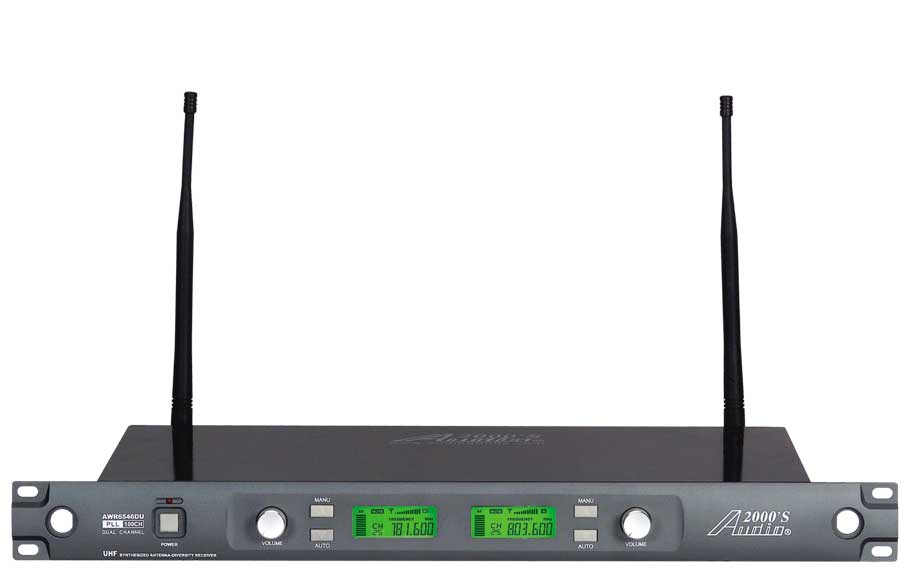
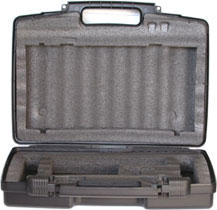
Lavaliere
(Lapel) Wireless Microphone System -
AWM6546DUM (AWR6546DU + 2 X AWX6540M's)
  

Handheld & Lavaliere
Wireless
Microphone System -
AWM6546DUL (AWR6546DU + AWX6540 + AWX6540M)
  

Headset
Wireless Microphone
System - AWM6546DUH (AWR6546DU + 2 X AWX6540H's)
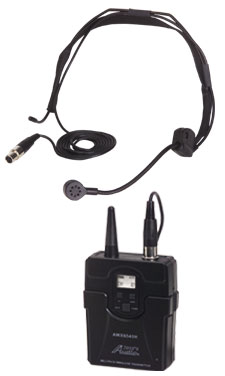   
Handheld & Headset
Wireless Microphone
System - AWM6546DUX (AWR6546DU +
AWX6540 + AWX6540H)




Guitar
Wireless System - AWM6546DUG (AWR6546DU + 2 X AWX6540G's)
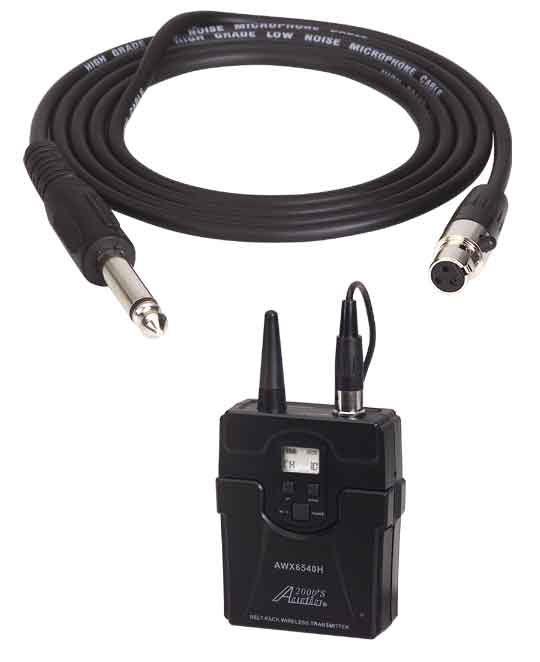  

Guitar
& Handheld
Wireless System - AWM6546DUQ (AWR6546DU + AWX6540G + AWX6540)
  

Guitar
& headset
Wireless System - AWM6546DUR (AWR6546DU + AWX6540G + AWX6540H)
  

Optional
Professional
Miniature Condenser Headset Microphone
for the AWX6540H -
ACC6540H-01 or
ACC6540H-01B
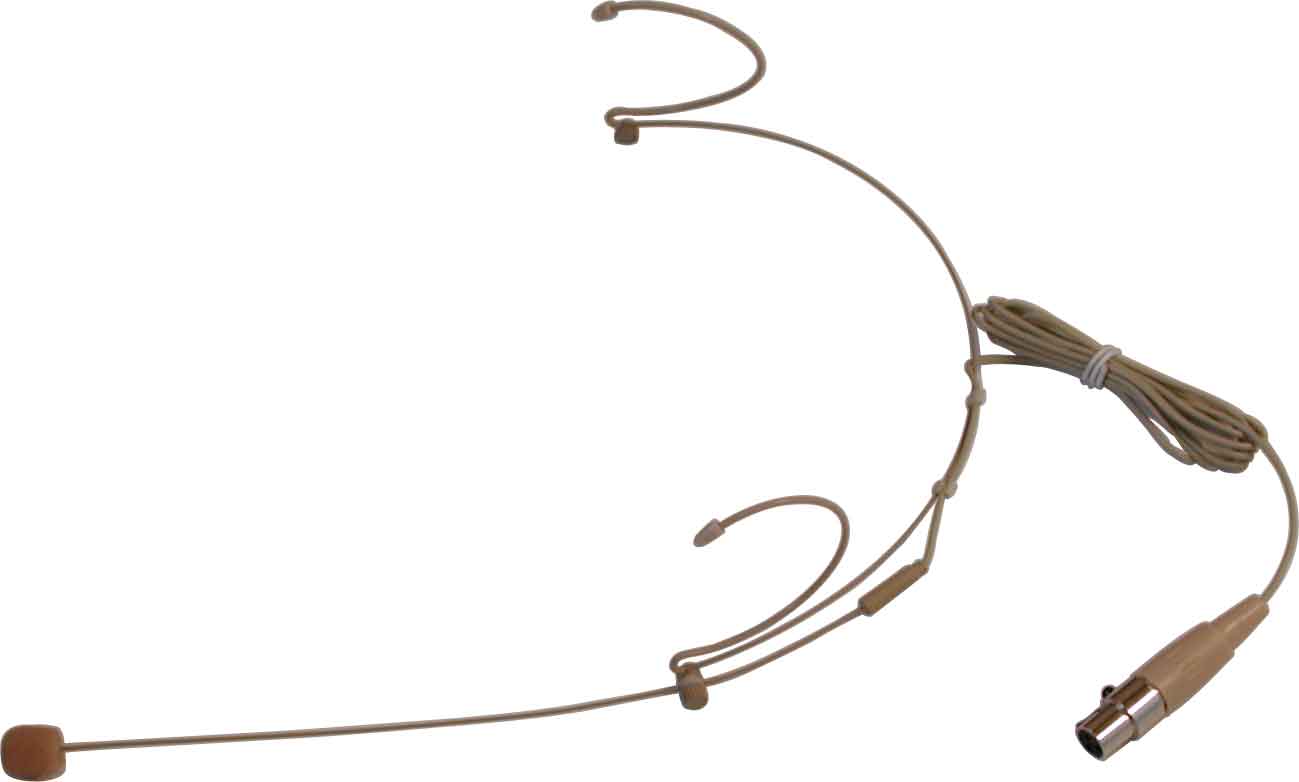
Optional Microprocessor
Controlled Charger for AWX6540 - ACC6546-01

With the exceptional RF transmission and reception
of the dual diversity circuitries, the AWM6546DU
system, with a transmission range of more than 250 feet, fully delivers all the reception
and audio quality features that allow you to really enjoy the freedom of wireless without
any of the problems.
Engineered For Dependable UHF Systems
As all the other Audio2000'S® wireless products, the
AWM6546DU system has been engineered to be dependable
dual-channel diversity UHF system with a wide audio
frequency range, high S/N ratio, and outstanding performance equal to that of any
professional wireless systems costing much more. This is achieved through strict
component selection and high quality circuit design. A delicately designed silence
circuit eliminates static noise when the transmitters are either turned off or out of
transmission range. An auto mute circuit is incorporated in these systems to
effectively eliminate the popping noise when the switch is turned on or off.
System Designed For Accessibility
The AWM6546DU system has been designed and manufactured to be
dependable, problem free, versatile and easy to use. The AWM6546DU system is
intended to be readily accessible to everyone with exceptional performance at a preferred
and affordable price.
APPLICATIONS
Musician; disc jockey (DJ); karaoke jockey (KJ); church; school;
conference room; karaoke; home entertainment
AWR6546DU RECEIVER
FEATURES
* Dual-Channel Diversity
Wireless Receiver
* 100 Adjustable Frequencies with PLL Synthesized Control
* UHF Band Frequency
* Two Independent XLR Balanced
Outputs
* One 1/4" Unbalanced Audio Output
* RF Input with Built-in RF Preamplifier to Improve S/N Ratio, Sensitivity
and Dynamic Range
* Low Noise Mixer Circuitry for Reducing interference
* Two Squelch Control Knobs
(One for Each Channel) at the Rear Panel
* Removable Antennas
*
LCD Display Panels and
Computerized Numerical Control
SPECIFICATIONS
|
Carrier Frequency Range |
571
- 598 MHz |
|
Frequency Stability |
10
ppm |
|
Receiving Sensitivity |
-105 dBm
(S/N: 12 dB) |
|
S/N Ratio |
>
105 dB |
|
T.H.D. |
< 1% |
|
Audio Output |
¼ (0
360mV @ 3K
Ohms
XLR (0 24mV @
600 Ohms) |
|
Dimensions (W X H X D) |
19.0 X 1.7 X
8.4 (483 X
43 X 213 mm) |
AWX6540,
AWX6540M, AWX6540H & AWX6540G
TRANSMITTERS
FEATURES
* UHF Band Frequency
* 100 Adjustable Frequencies with PLL Synthesized Control
* High Sensitivity Cardioid Microphone Capsule
* Audio Level Adjustment Knob for the AWX6540M, AWX6540H,
and AWX6540G
* Noise Reduction Mechanism for Eliminating Handling Noise and Switch Shock
Noise
* Computerized Numerical Control
* LCD Display Panel
SPECIFICATIONS
|
Carrier Frequency Range |
571
- 598 MHz |
|
Frequency Stability |
10
ppm |
|
Modulation |
Frequency Modulation (FM) |
|
Modulation Depth |
25KHz |
|
Output Power |
10mW,
Nominal (with 50 Ohms Load) |
|
Spurious Emission |
> 55 dB |
|
Battery |
AA
Batteries X 2 |
|
Current Consumption |
<
100 mA |
|
Dimensions (W X H X D)
|
Handheld: 9.6 X 2.0 X
2.0 (245 X 50 X 50 mm)
Belt-Pack: 4.7 X 2.6 X
0.9 (119 X
67 X 24 mm) |
|
Carrier Frequency Range |
571
- 598 MHz |
|
Frequency Stability |
10
ppm |
|
Audio Frequency Response |
50 15,000
Hz (-3 dB) |
|
Image and Spurious
Rejection |
>
80 dB |
|
S/N Ratio |
>
105 dB |
|
Max. SPL |
110dB |
|
T.H.D. |
< 1% |
|
Service Area |
330 ft (100 M),
Line of Sight |
|
Operation Temperature |
-4
°F +120
°F (-20
°C +49
°C) |
Back to Top
OPERATIONS
SYSTEM OPERATION
-
-
-
-
Place two
AA batteries into the battery
housing of the AWX6540,
AWX6540M, AWX6540H, or AWX6540G wireless
transmitter with the battery polarity oriented as
indicated.
-
Press the power
On/Off button continuously until the AWR6546DU is turned on.
-
If the channel numbers on
the AWR6546DU receiver match those on the AWX6540 transmitters and the
channel number of the channel A is different from that of the channel B,
the AWM6546DU system is ready to be used. If any of the channel numbers
on the receiver does not match the channel numbers of both transmitters,
that particular channel needs to have its channel number readjusted to
match the available transmitter channel number.
-
To readjust the AWR6546DU
channel number, please refer to the content on page 3 of the Owner's
Manual for the operation details.
-
Adjust the volume control knob on the
AWR6546DU receiver to have an optimal sound quality.
OPERATION NOTES
-
The AWX6540,
AWX6540M, AWX6540H, or AWX6540G needs to be turned off before changing the
AA
batteries.
-
Signal dropout or unexpected noise may
be caused by a low battery or by an excessive distance between the
transmitter and the receiver. If you encounter signal dropout or
unexpected noise, please check the battery first. If battery is still
fresh, try to readjust the antennas on the AWR6546DU receiver.
-
Avoid placing the receiver in a corner
to prevent any RF reception deterioration.
-
Avoid placing the receiver antennas
close to an obstruction or close to any metal surface.
-
Try to place the receiver as far away
from any digital equipment, including computers and some CD players, as
possible.
-
If more than one AWM6546DU wireless
microphone systems are stacked together or placed in a rack, do not let
the antennas touch each other or cross each other.
-
Before the AWM6546DU is to be used in a
new location, place the AWR6546DU receiver at the intended location and
walk-through the area with the transmitter to locate any radio frequency
blind spot, where a momentary loss of sound or short period of noise may
occur whenever the transmitter is moved to this spot.
-
Do not drop the transmitter on the floor
or strike the transmitter with any object.
-
Always turn off the transmitter and
remove the batteries if the transmitter is not to be used for a period of
time to prevent the transmitter from being damaged by a leaking battery.
Back to Top
TROUBLESHOOTING
PROBLEM
|
POSSIBLE CAUSES
|
SOLUTIONS
|
|
No sound. |
Receiver is
off. |
Turn on
receiver. |
|
Transmitter
power switch is off. |
Turn on
transmitter power switch. |
|
No battery or
bad battery in transmitter. |
Insert or
replace battery. |
|
Wrong polarity
or faulty battery contact |
Correct
polarity or battery contact. |
|
Receiver audio
cable is missing or defective. |
Connect, repair
or replace cable. |
|
Short range or
signal dropouts. |
Low transmitter
battery level. |
Replace
transmitter batteries. |
|
Poor antenna
reception. |
Reposition
antenna or receiver. |
|
Faulty
transmitter antenna. |
Return
transmitter to factory or authorized service station for service. |
|
Too many
obstacles between the receiver and transmitter. |
Move the
obstacles or move the receiver away from nearby metal objects. |
|
Signal
Interference. |
Another
wireless microphone operating on the same frequency |
Use a wireless
microphone with different operating frequency. |
|
Placement too
close to a digital signal processor or similar device (CD player,
stage lighting, etc.). |
1.
Select another operating frequency
2.
Move receiver to another location |
|
External
electromagnetic field source |
|
|
Distortion. |
Low transmitter
battery level |
Replace
transmitter batteries. |
|
AF Level
control on the transmitter set too high, overloading the receiver
circuit. |
Turn down the
AF Level control on the transmitter. |
|
Volume control
on the receiver set too high, overloading the subsequent sound
device input. |
Turn down the
volume control on the receiver. |
|
Momentary loss
of sound when transmitter is moved around the performing area. |
Radio frequency
(RF) blind spots. |
Reposition the
receiver. If the momentary loss of sound problem cannot be removed,
walk through the performing area and mark Blind spots. Avoid
these Blind spots during performance. |
|
Low sound
level. |
Faulty cable
connection. |
|
|
Receiver volume
control set too low. |
|
|
Sound levels
between two microphones are different. |
The receiver
volume control and/or the microphone AF Level control need to be
adjusted. |
1.
Adjust the transmitter gain control as necessary.
|
Back to Top
|
